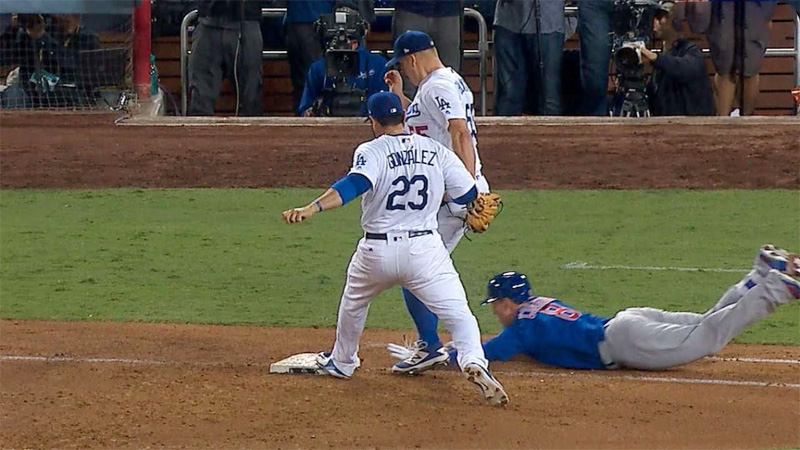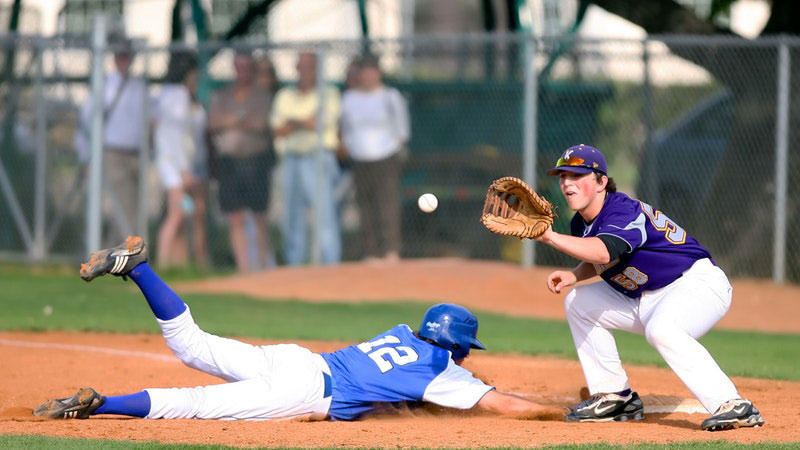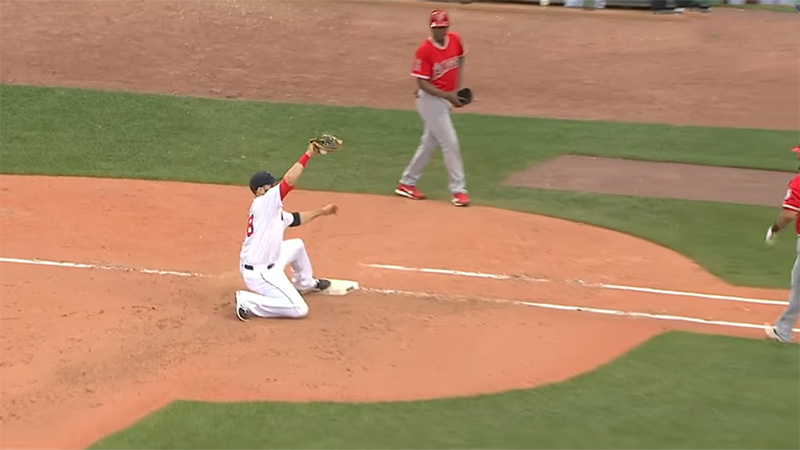In the game of baseball, defensive play is just as important as offensive prowess. Fielders play a crucial role in preventing runs and securing outs for their team. Two key statistics that measure a fielder’s defensive contributions are putouts and assists.
Putouts occur when a fielder directly records the act of completing an out, whether by catching a batted ball, tagging a runner, or stepping on a base. Assists, on the other hand, are attributed to fielders who contribute to outs without completing them, typically by throwing the ball to another fielder.
These statistics provide valuable insights into a fielder’s range, skills, and overall defensive performance.
We will delve into the definition, significance, and evaluation of putouts in baseball, shedding light on their importance in assessing defensive play.
What is a Putout in Baseball?
In baseball, a putout refers to a defensive play made by a fielder that results in an out being recorded.
It is the act of completing an out, and it is credited to the fielder who physically performs the action. Putouts are an essential part of the defensive aspect of the game and contribute to a team’s success.
Different Ways a Fielder Can Record a Putout
There are initially four different ways to record a putout while playing baseball. The ways are as followed.
Forceouts
One way a fielder can record a putout is through a forceout. A forceout occurs when a fielder touches a base with the ball in their possession before the baserunner reaches the base.
This forces the runner to be out and is typically seen in situations where there is a runner on base and a ground ball is hit.
Tagging a Runner
Another way a fielder can record a putout is by tagging a baserunner. This occurs when a fielder tags a baserunner with the ball while the runner is not on base. If the fielder successfully tags the runner before they reach a base, the runner is considered out.
Catching a Batted Ball
Fielders can also record putouts by catching a batted ball. If a fielder catches a fly ball or a line drive hit by the batter before it touches the ground, it is considered a putout. This is a common way for outfielders and infielders to record putouts during a game.
Catching a Third Strike
Putouts can also be credited to the catcher when they catch a third strike. If the pitcher throws a pitch that is called a strike by the umpire and the catcher catches it cleanly, it results in a putout. This is commonly referred to as a strikeout, and the catcher is credited with the putout.
Overall, these different ways of recording putouts showcase the defensive skills and abilities of fielders in baseball. It is an integral part of the game and contributes to the overall strategy and success of a team’s defense.
How Are Putouts Credited?

Putouts are credited to specific fielders based on their involvement in completing the out. The fielder who physically performs the action resulting in the out is the one credited with the putout.
For example, if a ground ball is hit to the shortstop, and the shortstop throws the ball to the first baseman, who steps on first base before the runner reaches, the shortstop is credited with an assist, while the first baseman is credited with the putout.
Role of Defensive Positions in Determining Putout Statistics
Defensive positions play a significant role in determining putout statistics. Each defensive position has different responsibilities and opportunities to record putouts.
For example:
Infielders
Infielders, such as the first baseman, second baseman, shortstop, and third baseman, have more chances to record putouts due to the number of ground balls hit in their direction. They are often involved in forceouts and tagging runners.
Outfielders
Outfielders, including the left fielder, center fielder, and right fielder, primarily have opportunities to catch fly balls hit into the outfield. They record putouts by making catches before the ball touches the ground or tagging runners trying to advance.
Catcher
The catcher has the responsibility of catching pitches from the pitcher, and if a pitch is called a third strike by the umpire and caught cleanly by the catcher, it results in a putout. The catcher’s ability to catch third strikes contributes to their putout statistics.
The defensive position a player occupies determines the types of plays they are involved in and influences their opportunities to record putouts.
This variation in defensive positions allows for a distribution of putout statistics among the fielders on a team, highlighting their specific roles in the game.
Importance of Putouts in Evaluating Defensive Performance

While evaluating the defensive performance, there is greater importance on putouts. You will understand them from the points below.
Statistical Significance of Putouts in Evaluating Fielders
Putouts play a crucial role in evaluating the defensive performance of fielders in baseball. They are a tangible statistic that reflects a fielder’s ability to make plays and contribute to the team’s defensive success.
The number of putouts a fielder accumulates throughout a season provides insight into their defensive skills, range, and overall effectiveness on the field.
By tracking putout statistics, teams, and analysts can compare fielders’ performances and assess their defensive contributions.
Fielders with higher putout numbers often demonstrate excellent fielding abilities, reliable hands, and strong positional awareness. It showcases their ability to make plays and secure outs, preventing opposing teams from advancing or scoring runs.
Relationship Between Putouts and Defensive Efficiency
Putouts also contribute to measuring a team’s defensive efficiency. A team with a higher number of putouts typically reflects a solid defensive unit that can consistently record outs and minimize the opponent’s scoring opportunities.
A strong defensive team with fielders who consistently convert plays into putouts can significantly impact the outcome of a game.
Furthermore, putouts are often correlated with other defensive statistics such as assists, double plays, and fielding percentages. A high number of putouts, combined with a low number of errors and a high fielding percentage, indicates a strong defensive performance.
It demonstrates a team’s ability to execute plays effectively, reduce errors, and control the game defensively.
Examples of Notable Putouts in Baseball History
Throughout baseball history, there have been numerous memorable put-out plays that have left a lasting impact on fans and the game itself.
Some notable examples include:
- Willie Mays’ over-the-shoulder catch in the 1954 World Series: In Game 1 of the 1954 World Series, Willie Mays, playing center field for the New York Giants, made a remarkable over-the-shoulder catch on a long drive hit by Vic Wertz of the Cleveland Indians. Mays caught the ball deep in center field, turned, and made a strong throw back to the infield, preventing the runners from advancing and creating a scoring opportunity.
- Derek Jeter’s “Flip Play” in the 2001 ALDS: In a critical moment during Game 3 of the 2001 American League Division Series, Derek Jeter, the New York Yankees’ shortstop, made an incredible instinctive play known as the “Flip Play.” With the Oakland Athletics threatening to score, Jeter raced across the field, scooped up an errant throw, and made a backhanded flip to catcher Jorge Posada, who tagged out Jeremy Giambi at home plate. The play showcased Jeter’s awareness, agility, and defensive prowess.
Impact of Exceptional Defensive Plays on the Game
Exceptional defensive plays resulting in putouts can have a profound impact on the outcome of a game. They often shift momentum, prevent runs from scoring, and inspire both teammates and fans.
Some notable impacts of exceptional defensive plays include:
Saving Runs and Preventing Extra-base Hits
Spectacular catches or throws resulting in putouts can rob opponents of potential extra-base hits or prevent runs from scoring. These plays can change the course of an inning or game, demoralizing the opposing team and energizing the defense.
Preserving No-hitters and Perfect Games
Putouts resulting from exceptional defensive plays can help preserve historic pitching performances. Fielders making extraordinary plays to record outs on hard-hit balls or line drives contribute to the achievement of no-hitters or perfect games, cementing their place in baseball history.
Swinging the Momentum in Favor of the Defensive Team
A remarkable putout play, especially in crucial situations, can shift the momentum of a game. It can rally the defensive team, create excitement, and motivate players to perform at their best, inspiring a potential comeback or maintaining a lead.
Notable putout plays and exceptional defensive performances not only showcase the athleticism and skill of individual players but also have a broader impact on the dynamics and excitement of the game itself.
Putouts and Assists in Baseball
As we’ve learned putouts are an essential aspect of defensive play in baseball. A putout occurs when a fielder physically records the act of completing an out, whether by stepping on a base for a forceout, tagging a runner, catching a batted ball, or catching a third strike.
On the contrary, assists are another significant defensive statistic in baseball. An assist is credited to a fielder who contributes to an out without completing the out themselves. It typically occurs when a fielder throws the ball to another fielder, leading to the completion of an out.
For example, a shortstop fielding a ground ball and throwing it to the first baseman for a forceout would receive an assist. Assists demonstrate a fielder’s ability to make accurate throws and contribute to defensive plays.
Relationship Between Putouts and Assists
Putouts and assists often go hand in hand, as they represent different aspects of defensive play. While putouts directly reflect a fielder’s involvement in completing outs, assists highlight their role in initiating or facilitating outs.
Both statistics contribute to evaluating a fielder’s defensive performance and measuring their overall impact on the game.
High putout and assist numbers indicate a fielder’s involvement in numerous defensive plays and their ability to contribute to the team’s defensive efficiency.
Importance of Putouts and Assists in Defensive Evaluation
Putouts and assists play a crucial role in evaluating a player’s defensive abilities. These statistics help assess a fielder’s range, accuracy, and overall defensive prowess.
High putout and assist numbers indicate a fielder’s involvement in a significant number of outs, suggesting their reliability and skill on the field.
Teams and analysts often use putouts and assist, along with other defensive metrics, to compare fielders, assess their contributions, and make informed decisions about defensive strategies and player evaluations.
Ultimately, putouts and assists provide valuable insights into a fielder’s defensive performance and their impact on the game.
Comparison of Putouts and Assists in Baseball
Aspect | Putouts | Assists |
Definition | Fielder’s act of completing an out themselves | Fielder’s contribution to an out without completing it |
Examples | Catching a batted ball, tagging a runner, stepping on a base | Throwing the ball to another fielder for the out |
Measurement | Directly counted as individual fielder’s statistic | Credited to the fielder who initiates or facilitates the play |
Significance | Reflects the fielder’s ability to make plays and complete outs | Demonstrates fielder’s role in initiating defensive plays |
Evaluation criteria | Indicates defensive range, skills, and effectiveness | Evaluates throwing accuracy and overall defensive performance |
Relationship | Often correlated with the strong defensive performance | Complements putouts to assess fielder’s defensive impact |
FAQs
How are putouts and assists recorded in baseball statistics?
Putouts and assists are recorded in baseball statistics as individual fielding categories. Each time a fielder completes an out by themselves, it is credited as a putout. When a fielder contributes to an out by throwing the ball to another fielder, it is recorded as an assist.
These statistics are tallied for individual players and are used to evaluate their defensive performance.
Are putouts and assists equally important in evaluating defensive skills?
Putouts and assists are both important in evaluating defensive skills, but they represent different aspects of defensive play. Putouts reflect a fielder’s ability to directly complete outs, showcasing their range, fielding ability, and positional awareness.
Assists, on the other hand, demonstrate a fielder’s throwing accuracy and their role in initiating or facilitating defensive plays. Both statistics contribute to evaluating a player’s overall defensive impact.
Can a fielder receive an assist and a putout on the same play?
Yes, it is possible for a fielder to receive both an assist and a putout on the same play.
For example, if a ground ball is hit to the shortstop, and they field it cleanly and throw to the first baseman for the out, the shortstop would receive an assist for the throw and the first baseman would receive a putout for completing the out by stepping on the base.
Do putouts and assists vary based on a player’s defensive position?
Yes, the defensive position a player occupies can influence their putouts and assists statistics. Certain positions, such as first basemen and catchers, are more likely to accumulate higher putout numbers due to their involvement in fielding ground balls or receiving throws from other fielders.
Middle infielders, like shortstops and second basemen, often have more opportunities for assists as they are involved in initiating double plays or making throws to first base.
Can a fielder’s putouts and assists be influenced by the team’s overall defensive performance?
Yes, a fielder’s putouts and assists can be influenced by the team’s overall defensive performance. A team with strong defensive play and good pitching may provide more opportunities for fielders to accumulate putouts and assists.
Conversely, a weaker defensive team with fewer opportunities for outs may result in lower putout and assist numbers for individual fielders. It is important to consider the team’s defensive context when evaluating a player’s individual statistics.
Conclusion
Putouts and assists are fundamental components of defensive play in baseball. Putouts represent a fielder’s direct involvement in completing outs, while assists demonstrate their role in initiating or facilitating defensive plays.
These statistics provide valuable insights into a player’s defensive skills, range, and overall impact on the game. Both putouts and assists contribute to evaluating a player’s defensive performance and are used in conjunction with other metrics to assess their overall effectiveness on the field.
A high number of putouts and assists indicates a fielder’s involvement in numerous defensive plays and highlights their reliability and contribution to the team’s defensive efficiency.
By understanding and analyzing putouts and assists, we can gain a deeper appreciation for the crucial role of defense in the game of baseball. Best wishes.







